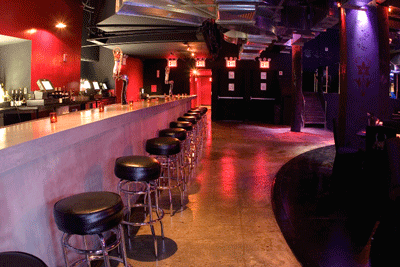“After silence, that which comes nearest to expressing the inexpressible is music.”
– Aldous Huxley
 With everything epic, there is an imminent collision of past and future embedded in the mythology. This is especially true in cities where layers of robust history rest at the foot of long-standing architectural structures, this juxtaposition itself creating a unique dialect.
With everything epic, there is an imminent collision of past and future embedded in the mythology. This is especially true in cities where layers of robust history rest at the foot of long-standing architectural structures, this juxtaposition itself creating a unique dialect.
Within five minutes of meeting anyone in New York, you will have discussed where you both come from, which neighborhood you live in, and why it originally called out to you. When you meet friends for drinks there is always a story—“Remember what this venue used to be back in the day?” After living in the city for days—and then that sudden collapse of weeks, months, and years—if you randomly walk down a street you’ve never been on, you will be surprised.
Here, in our dear New York, we count on certain things to be consistent, reliable, even though places are constantly closing and re-opening. For example, there will always be something aesthetically inspiring at The Met, and Central Park will always be romantic. Downtown will always have a remarkably different emotional temperature from the Upper East Side, and the Financial District will always be deserted after the markets close. Even though the Bowery lost its edge to gentrification and CBGB gave way to a Varvatos store, there are other venues that stand as indestructible havens for the electric energy of live music.
(Le) Poisson Rouge originally opened its doors at 158 Bleecker Street as the Village Gate in 1958, showcasing a string of infamous acts for 38 years. The wandering ghosts of Nina Simone and John Coltrane haunt the basement corridors. There is a purple premonition that Patti Smith or Tupac Shakur once leered surreptitiously at a fellow performer from a dark corner of the room. Iggy Pop recently played a secret show at LPR, while Florence Henderson (minus The Machine) mounted the stage via a surprise guest performance with Blood Orange. A lot of renowned artists have played at (Le) Poisson in those pivotal moments before a massive career-break, placing the venue’s bookings in anticipation of the mainstream curve. Famous faces, who learn from and truly enjoy watching their peers perform, frequently grace the bar, their rapt presence as listeners adding layers of history and texture to the red-and-black interior walls.
The main reason that LPR has become one of the most renowned music venues since it opened back in 2008 is because of one thing: heart. Right out of the gate, there was the deliberate intention to showcase artistry, bringing contemporary classical music into the club setting. The variety of stage setups mean that the evening can start with a seated performance and then morph into a swaying rock show, or a sweat-drenched crowd morphing into a massive fan collective in front of DJs such as Onra or Amon Tobin. The circular center-stage setup, used for ambient shows, is especially awe-inspiring.
I am fortunate to have been part of LPR since the beginning, when we all embarked on a great adventure with the promise of that simple yet elusive outcome: a positive cultural effect on New York City. The employees themselves are a collection of artists working in various mediums, and it’s interesting to note there has been hardly any staff turnover in five years, certainly a rarity in the city that never sleeps.
All of these components collide in an urban tornado to create something historical in the most post-modern of ways, just as music is becoming more hybrid. Sometimes you want to hear grunge or 80s, other days you want underground hip hop, or the sound of DIY punk/hard core/experimental music by way of HEALTH or Boris. With the digital age upon us, the mixed music genre possibilities are endless. This is why, in a city that is renowned for being ahead of the curve, it’s important to have a unique vision. (Le) Poisson Rouge accomplishes this with style.
text by Andrea Grant

